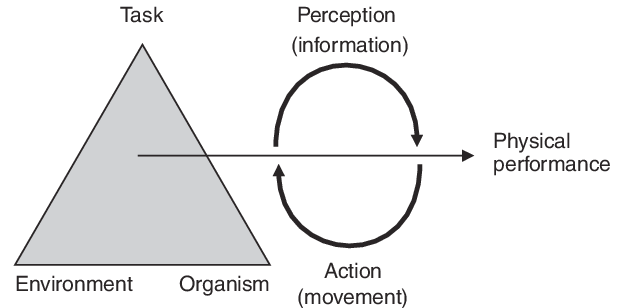Interpersonal dynamics
More than two-thirds of ACL injuries occur from non contact mechanisms, many of which are associated with collision avoidance, such as a point-guard cutting to avoid a defender.
Anecdotally, many of us believe the interpersonal dynamics of sport contribute to ACL injuries; they tend to occur more frequently in game play than practice and to defenders than offenders. However, foundational questions remain.
Do individuals at risk for (or following) ACL injury perform worse at reactive interpersonal coordination tasks?
Can this be optimized through training?
If so, how?
Figure – Newell’s model of interacting constraints and the effects on variability of physical performance.
There are currently no investigations into interpersonal dynamics surrounding ACL injury or return to play. Still, the realization that opponent actions disrupt movement patterns threatens the validity of traditional rehabilitation. Are we effectively developing readiness for sport? A deeper understanding of our patients’ adaptability to environmental perturbations (and how to optimize it) is an area of much needed research.
Clinical tip: One thing is for sure: Our clinics do not look or feel anything like the field of play. So, we must at least ease the transition from clinic to return to play. Read more about the control-chaos continuum.

